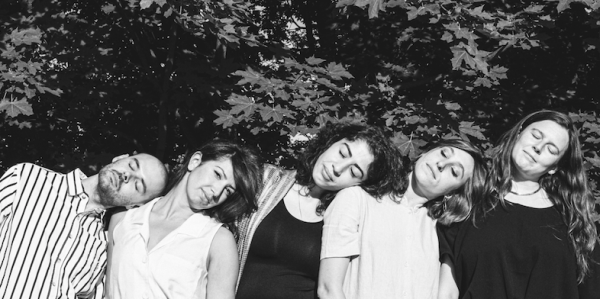Bruce Checefsky (USA)
Bruce Chechefsky
There are 11 sketches/drawings and a completed script to Others in the Andrzej Pawłowski archives. The Pawłowski family has generously agreed to lend the documents to produce the unrealized film which Bruce Checefsky will direct. Checefsky plans to shot the film on location in Krakow and Warsaw. Lukasz Ronduda, curator of The Archive of Polish Experimental Film at Ujazdowski Castle Centre for Contemporary Art, Warsaw, will assist in borrowing the remaining sketches. Mr. Ronduda will assist in pre- and post production activities. The 12-week project is expected to involve local actors, art historians and theoreticians, and film industry specialists. A special screening of the film is planned for the Ujazdowski Castle Centre for Contemporary in Warsaw.
The history of avant-garde cinema in Poland began in 1930 with the films of Franciszka and Stefan Themerson. Their influential film Apteka (Pharmacy - remade in 2001 by Bruce Checefsky) used a diversity of poetic devices compatible with pure "filminess"; and quickly became one of the main characteristics of the Polish avant-garde cinema. The Themerson's are considered pioneers of Polish experimental filmmaking and their work is regarded as a forerunner to structuralist film. Since 1930 several other Polish filmmakers have made significant contributions to experimental cinema including Jan Lenica, Walerian Borowczyk, and Andrzej Pawłowski. The first post-war decade in Poland was a discouraging period for any autonomous artistic practice including independent cinema. Its importance was lost in the turbulent political times. The end of the fifties brought a revival of experimental film with a significant breakthrough by Andrzej Pawłowski. His 1957 experimental film Kineformy [Cineforms] consisted of projecting moving abstract models onto a screen using a special image-distorting lens. Pawlowski devised a light machine with two crank-like handles to move the models and the lenses. The light, passing through the lenses, distorted the forms, resulting in a series of very complex images - wispy smoke, diaphanous curtains, passing ghosts and then suddenly solid organic forms. The light performance was then filmed. Pawlowski gained international fame with Kineformy and inspired a new generation of filmmakers and artists. Today he is considered one of Poland's most important 20th century artists.
Several years following the international success of Kineformy, Pawlowski wrote a film script titled Others [Inni] based on a 1939 to 1944 diary of a mentally ill person found at a psychiatric hospital in Krakow. Pawlowski completed the film script but it remained unrealized upon his death in 1986.
Andrzej Pawlowski (1925–1986) was a painter, sculptor, photographer, experimental filmmaker, theoretician, and educator. He also designed industrial forms and exhibition arrangements. He was a professor and co-creator of the Industrial Forms Department at the Academy of Fine Arts in Krakow. He was co-founder of the Kraków Group and the Association of Designers of Industrial Forms. Pawlowski was a member of the Association of Polish Visual Artists and the Association of Polish Artistic Photographers, as well as a participant of the International Council of Societies of Industrial Design (ICSID).
- Curated by
- Marianna Dobkowska
- Cooperation
- Łukasz Ronduda, curator of The Archive of Polish Experimental Film



